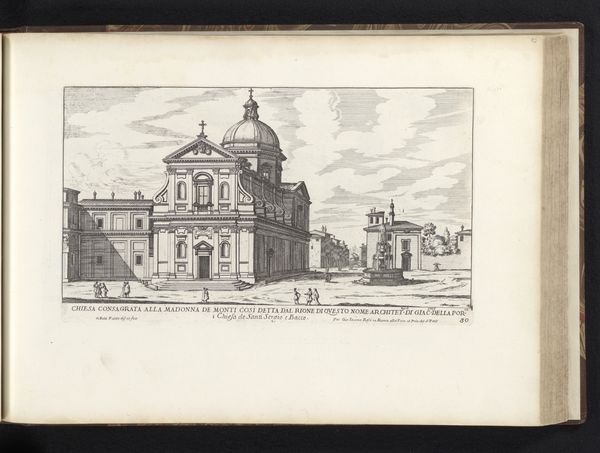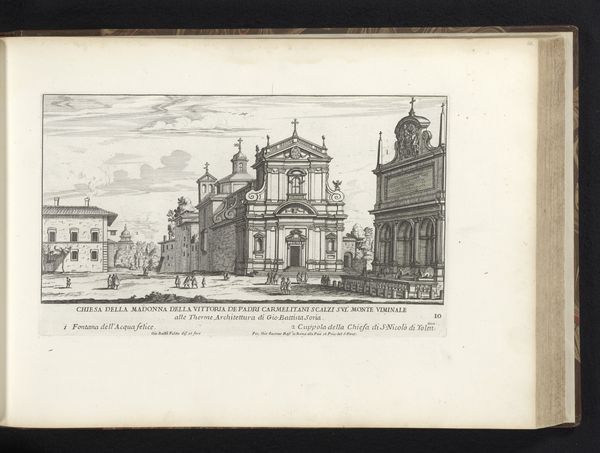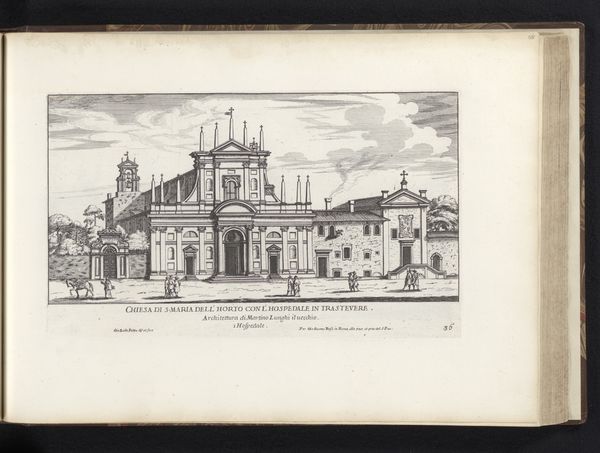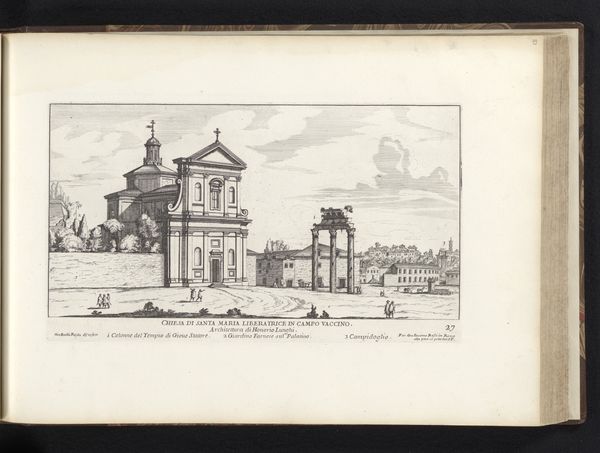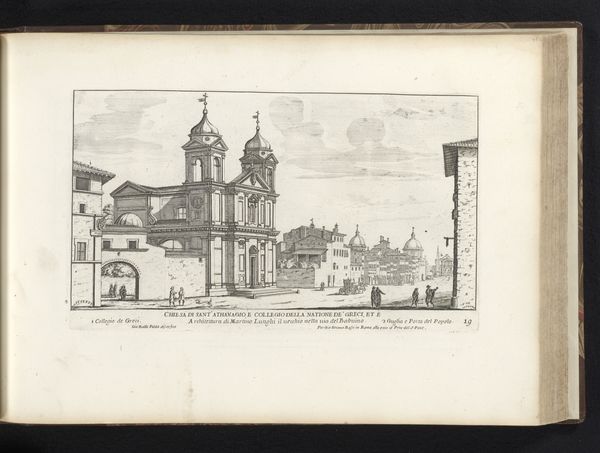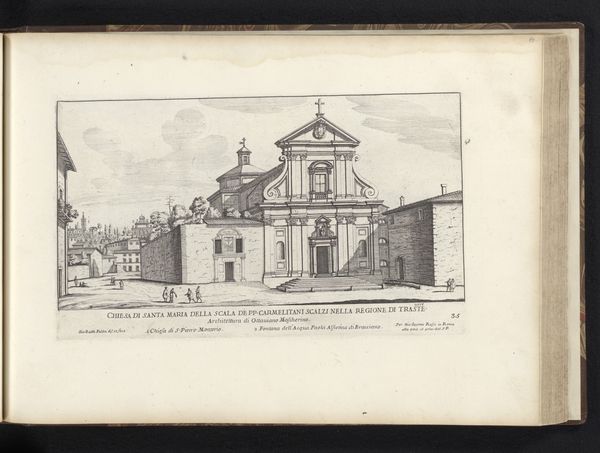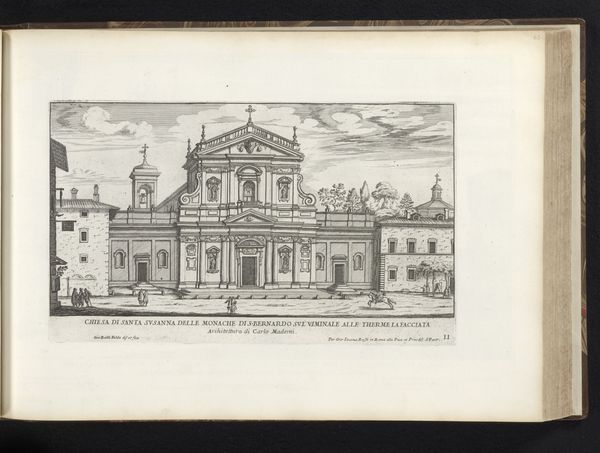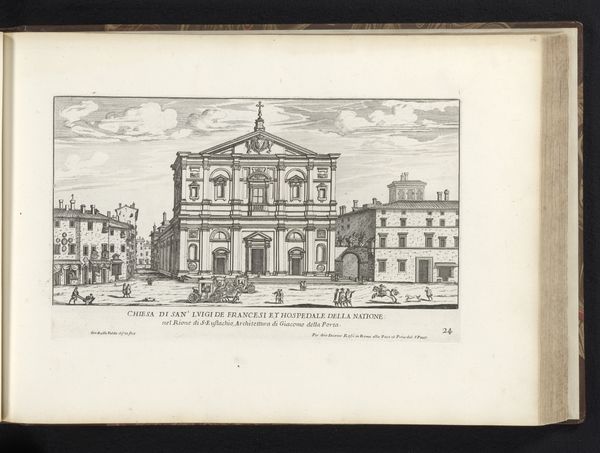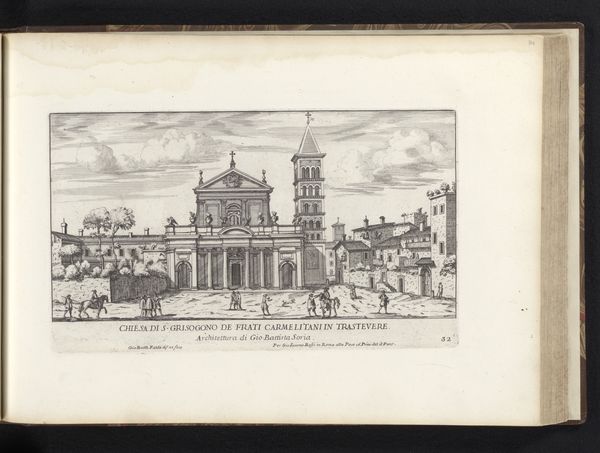
print, engraving, architecture
#
aged paper
#
baroque
#
mechanical pen drawing
# print
#
old engraving style
#
sketch book
#
personal sketchbook
#
pen-ink sketch
#
pen and pencil
#
pen work
#
sketchbook drawing
#
cityscape
#
sketchbook art
#
engraving
#
architecture
Dimensions: height 168 mm, width 291 mm
Copyright: Rijks Museum: Open Domain
Editor: This engraving, “San Nicola da Tolentino te Rome,” by Giovanni Battista Falda, dates from 1669 to 1670. It's a detailed cityscape, but something about the rigid architectural lines feels almost…oppressive. How do you interpret this work? Curator: That’s a perceptive reaction. Beyond the immediate visual impression, consider how such meticulously rendered cityscapes served as tools of power. This isn't merely a record of a church; it's a statement about the Church’s dominance and influence within Rome’s socio-political fabric. The precise lines and ordered composition subtly reinforce an idea of control. What message do you think Falda was trying to convey to the masses? Editor: I suppose I hadn't considered that it could be about control rather than just documentation. The inscription emphasizes the church's location "between the Quirinal and Porta Salaria"... Was that positioning of significance? Curator: Absolutely! The Quirinal Palace was the seat of Papal power; Porta Salaria, an ancient gate and route in Rome. By highlighting this strategic placement, Falda reinforces the church's central role in both spiritual and civic life. It's a spatial assertion of power. But does this raise questions for you about marginalized perspectives, of the residents perhaps? Editor: Yes, that makes me think about what’s *not* shown here. Everyday life feels secondary to this grand statement of religious and political might. Is the grandeur intentional, to make you feel small in comparison? Curator: Precisely. These images also omit the complexities and struggles of the era. There’s a careful curation of the urban narrative – think about who benefits from that curated view. Editor: I see the engraving as something beyond just art: it's an intentional visual narrative that actively shaped perceptions of power and space in Rome. Curator: Exactly! It’s a reminder that art doesn’t exist in a vacuum, it lives, breathes and has real-world influence.
Comments
No comments
Be the first to comment and join the conversation on the ultimate creative platform.
